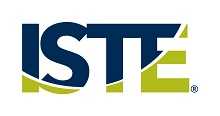Communication looks different in the Innovation Age compared to the Information Age of yesteryear. Here’s how to help students succeed
 Ed. note: Innovation In Action is a monthly column from the International Society of Technology in Education focused on exemplary practices in education.
Ed. note: Innovation In Action is a monthly column from the International Society of Technology in Education focused on exemplary practices in education.
Ready or not, education has entered the “Innovation Age,” where it’s not about what students know but what they can do with what they know. Teachers can prepare students to thrive in the Innovation Age by teaching them to think at three levels: “what,” “so what,” and “now what.” Students might think of it in terms of three overarching questions: What is the basic concept? What is its relevance and what is it related to? And now, what can I do with what I have learned to find solutions to unmet needs?
In the Information Age, the era we are just now emerging from, knowledge was power so educators taught students to access, gather, analyze, and report information. In the Innovation Age there is a glut of information and data are readily generated or at fingertip accessibility. Successful educators in the Innovation Age must empower students by leading them discover their agency, define their purpose, and be open to fresh perspectives.
Power
In the Innovation Age educators must wield technology and media to become change agents and innovators with scalable concepts because they have a voice and a broader platform. Trends change by the hour and the day instead of seasons and years.
Purpose
Before innovators can successfully meet needs, they must understand their users and think empathetically. In the Innovation Age success is in the eye of the user. Students must ask themselves what success looks like from many perspectives. Instead of a singular focus on presenting a single solution, innovators have to be adept at two-way communication to sustain their relevance and connection with their audience or market.
Educators must now focus on the 4 Cs (collaboration, communication, creativity, and critical thinking), all hallmarks of the ISTE Standards for Students, to prepare students for college and career readiness. Many teachers have put off incorporating these “soft skills” because they feel too nebulous or abstract to teach. In my district, San Lorenzo Unified School District in California, we addressed three critical teacher needs through our 12-hour technology academies: (1) exploring new laptops and peripherals, (2) instructional strategies for integrating technology and incorporating the 4 Cs, and (3) experiencing a one-to-one learning environment before teaching in one. While the results are preliminary, initial responses and evaluations from participants show the focus on communication is very immediate, applicable, and thought-provoking.
Next page: Strategies and tools for better communication
Consider these fresh perspectives on communication
Communication is critical throughout the innovation process, and excellent communication skills are essential in every walk of life. Learning and teaching boil down to communication. There are three things that we stress when we work on communication: agency, empathy, and fluency. As educators, we should be working on all three with our students. What tools can we provide students to give them voice (agency)? How can we develop their empathetic thinking (empathy)? Can we enhance their communication skills so they can better communicate using words, data, and graphics (fluency)?
We have found a number of tools and strategies, mostly using already widely-used web tools, that have enhanced our communication repertoire. While not an exhaustive list, we have found these tools and concepts to be invaluable.
Agency: Empower students to be contributors and problem solvers
- Voice – Students become aware of their voice and agency when they are producers and publishers. Teachers can help students to find their voice by teaching them to be smart consumers and creative producers.
- Impact – Collaboration and networking increases the impact students can make. The more teachers collaborate to build richer curriculum, the more they understand the power of student collaboration.
- Scale – Technology improves the scalability of projects.
Empathy: Connect and impact your audience by building empathetic thinking
- Think in terms of “What. So what. Now what,” where “what” equals content or skill, “so what” equals relevance or related concepts, and “now what” equals what your audience/user will take away or do as a result of your message. After identifying the “now what” of your message, you can better refine or streamline your “what” and “so what.”
- If you prefer to be hands-on or active, so does your audience. Add two-way communication strategies to one-way presentation skills to increase audience involvement.
Fluency: Communicate more fluently through words, graphics and data
Communicating through words – Create order out of chaos and promote learning through writing.
- Use word processing features to build a structure that encourages flow.
- Use Styles to format text to save time, ensure consistent hierarchy in the content, and insert a table of contents.
- Try built in-tools, such as Voice Text and Research in Google Docs, to make the writing process easier.
Communicating through graphics – Most people are visual learners, yet often graphics are ignored as communication tools.
- Use graphic organizers (such as SmartArt) to clearly communicate the essence of your list, process, hierarchy, relationship, etc.
- Edit images so they enhance and reinforce your message. Take command of pictures by using tools such as text wrap, cropping, color enhancement, picture effects.
- Introduce graphic elements in a progression so their repertoire of skills builds in complexity with each successive project: Start with having students collect and download images, and continue on to photo editing, drawing tools, audio, sound editing, slide show animation, and lastly, video. By the time you assign video, students will already be able to produce higher quality video in less time.
- Assign an infographic project using templates on easel.ly, piktochart.com, Canva, or Venngage.
Communicating through data – In addition to pie charts, graphs, and tables, encourage students to gather data by creating their own surveys, quizzes, and forms.
- Use Google Forms or inserting a survey using Excel Online.
- Share a spreadsheet with “Can edit” rights.
- Map your responses using batchgeo.com.
Being a good communicator is more complicated in the Innovation Age. There’s more competition than ever before. The good news is there are more ways to create impactful, lasting messages. Try some of these tools to refresh your communication skills for the Innovation Age.
Finally, a question for you: Now that you know the what and the so what of building strong communication skills in the Innovation Age — now what?
- TC- What student choice and agency actually looks like - November 15, 2016
- What student choice and agency actually looks like - November 14, 2016
- App of the Week: Science sensor meets your smartphone - November 14, 2016

